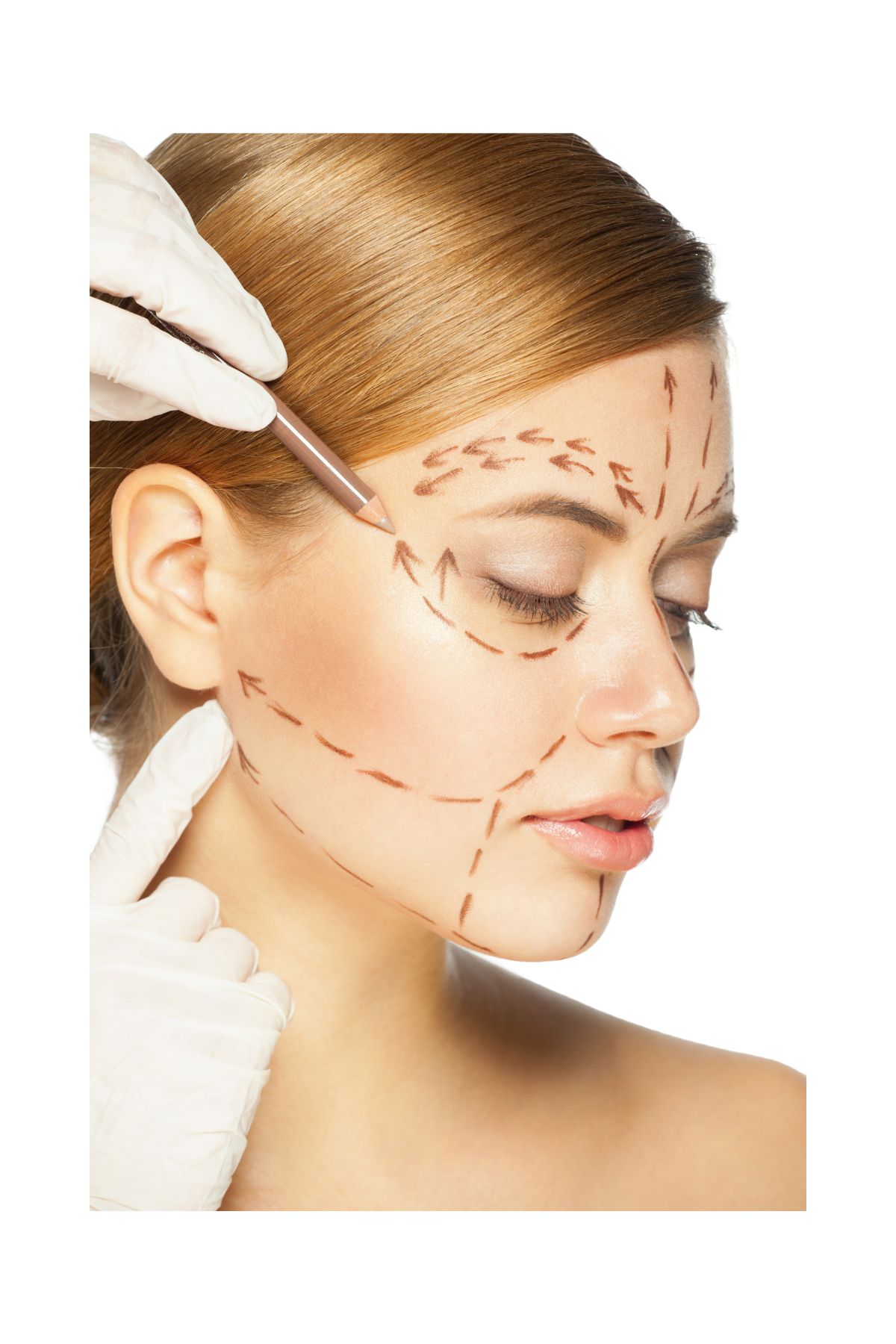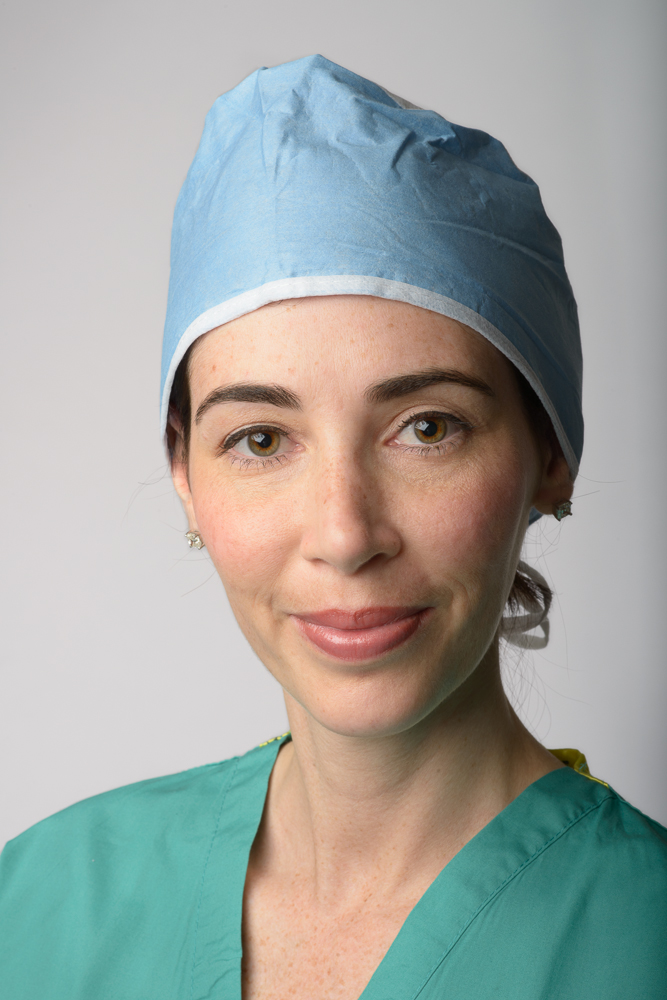Plastic Surgeons Reveal Everything You've Ever Wanted to Know About a Facelift
From cost, recovery, and the best age to go under the knife.

Hannah Baxter
Of all the cosmetic procedures on the market right now that promise to improve visible signs of aging (and there are plenty to choose from), a facelift is definitely one of the buzziest. Whether we're theorizing about celebs who may or may not have gone under the knife, planning how to budget for our own eventual surgery, or wondering if cutting into your face is even worth the significant investment (both for your time and your credit card), there's a lot to ponder about the quintessential plastic surgery procedure. And given that 78,482 Americans sought out a facelift (aka a rhytidectomy) in 2023, we're clearly not the only beauty fanatics curious to know everything there is to know about a facelift.
To answer all your burning questions about the treatment, we asked two top double board-certified plastic surgeons in New York City, Melissa Doft, MD and David Shafer, MD, to share their expertise. From the average cost and recovery time to the best age to undergo the procedure (hint: the answer isn't what you think), keep reading for all the most important details to know before booking your facelift consultation.
What Is a Facelift?
It's easy to assume that a facelift is just about pulling back your facial skin as tight as it can go to achieve a more youthful appearance, but the reality is much more nuanced. As Dr. Doft explains, “A facelift involves tightening the skin and underlying SMAS (Superficial Musculoaponeurotic System)/platysmal layer of the face and neck to reposition fat compartments and the platysmal muscle, thereby redefining the jawline." She notes that it is the gold standard for facial rejuvenation, as well as lifting and defining the jawline to re-establish a youthful heart-shaped face. Many patients also use the time they're under general anesthetic to add in other invasive cosmetic treatments, such as a blepharoplasty (eyelid surgery), fat grafting to the nasolabial folds, marionette and temples, a lip lift, and a chemical peel or laser procedure, according to Dr. Doft.
What Are the Key Benefits of a Facelift?
A facelift can improve several aspects of your face, many of which are affected by the aging process. These include, “a better defined jawline, less fullness under the chin, a more contoured neck, and lifted cheeks,” says Dr. Doft. “It transforms a squared, aged, masculine jawline into a lifted, heart-shaped one.”
Many of these areas can be treated with filler, but, as Dr. Shafer notes, injectables and lasers can't accomplish the same results as a facelift. "It takes it to the next level and does what you can't do with non-invasive procedures, such as removing the skin laxity, repositioning the muscles and soft tissue underneath the skin to contour the face," he says. "The benefits are long-term and you can get very dramatic results. My goal is for people not even to know you did anything, but know you look amazing.”

What Is the Best Age to Get a Facelift?
It would be too easy to say that 50 (or 45 or 65) is the age to go under the knife, but that's simply not the case. Just as the technique can vary from person to person (and surgeon to surgeon) in order to achieve the best results, so does the ideal time to explore a facelift. “People always say, ‘at what age do I get a facelift?,’” says Dr. Shafer. “It really doesn't matter what age. I'm looking at your anatomy and your goals for the procedure and what we can do surgically or non-surgically." The things that he is looking at to determine if you're at the right age for a facelift include the degree of skin laxity, aka how loose the skin is, how much fat or tissue there is in the face, and whether the patient will need to do some ancillary procedures (like fat grafting) at the same time to boost that up.
Dr. Doft adds, "I am often asked about the perfect age and the answer is that there is not one. Each individual ages differently due to genetics, ethnicity, sun exposure, significant weight gain and loss (particularly on the GLP-1s), early menopause, and smoking. All of these factors change how the face ages. I advise patients to proceed with surgery when they find they are looking in the mirror often and are not happy with the view. When aging affects your sense of self-confidence, we should talk.”
Stay In The Know
Get exclusive access to fashion and beauty trends, hot-off-the-press celebrity news, and more.
Who Is a Good Candidate for a Facelift?
The beauty of speaking with a renowned plastic surgeon for a consultation is learning what treatments are best for your aesthetic concerns. Often patients who visit a professional looking for a facelift are better suited for a different cosmetic procedure—they just don't know it yet. Says Dr. Shafer, "If you don't have loose skin, and you just have a full neck or ill-defined jawline, then in most cases, you could do something simple like neck liposuction and maybe a little Renuvion, which is a plasma skin tightening device that tightens moderately loose skin. If you have skin where you have to pull it to simulate what you want to look like, then generally, that requires a true surgical procedure where we're going to make those decisions.”
Determining if a patient is a good candidate for a facelift also involves more parameters than just skin quality. As Dr. Doft explains, “I always look for someone who I know that I can make a difference in their appearance by performing the surgery, they are healthy enough to undergo the procedure (some older patients have comorbidities which make them poor surgical candidates), and that they will be happy with the results."
I advise patients to proceed with surgery when they find they are looking in the mirror often and are not happy with the view.
Dr. Melissa Doft
How Do You Prep for a Facelift?
Pre-op protocol can vary depending on your surgeon, but there are some general best practices to keep in mind. Dr. Doft notes that she asks patients to stop smoking for one month prior to and one month after surgery, and asks that patients are at or close to their goal weight. "Losing weight after the procedure can lead to excess skin," she explains. Basically, you need to prioritize a healthy lifestyle before seeking out a facelift in order to both ensure you are a good candidate and to optimize the results of your surgery.

Where Are the Facelift Incisions Located?
This choice is particular to every surgeon and every facelift patient. As Dr. Shafer explains, there is no cookie-cutter approach. "Generally there are two incisions,” he says. “Most people need a little incision underneath their chin, which gives us access to the fat pad so we can define the cervico-mental angle, which is the angle between your chin and neck. It also lets us approach the anterior platysmal muscle, which is causing those vertical bands you see in the neck.
He adds that the other incision will be somewhere around the ear—either in front of the ear or partially in front, and then inside of the ear canal, by the tragus. "The incision has to be customized to what you're doing for the patient—it's not always the same incision," he says. "Factors to consider would be how much skin is being removed, what areas we're addressing on the face, the hair pattern that the patient has." The scars from the incisions will also generally take longer to heal than the swelling from the surgery (more on that in a minute).
What Are the Risks of a Facelift?
A facelift is a highly invasive elective treatment and not something to take lightly. It's extremely important to consider all the risks of the surgery before walking into the operating room (or putting down a deposit). As Dr. Doft explains, “The most common risk is a hematoma (a collection of blood under the skin) which can necessitate returning to the operating room if large, or it can be handled in the office if small. [Also] poor scarring, asymmetry (all patients have asymmetry before surgery but once the skin is tighter sometimes they notice it more), damage to motor or sensory nerves which can affect facial movements or sensation respectively (less than one percent of patients experience this), contour deformities or unevenness, or being unhappy with the cosmetic results." Be sure to ask your facelift surgeon about the various risks and how to minimize them through proper pre-op care and post-op healing.
When aging affects your sense of self-confidence, we should talk.
Dr. Melissa Doft
How Long Does Facelift Surgery Take?
This is not an outpatient procedure, if you couldn't already tell. From pre-op to seeing the final results, there are many, many weeks dedicated to ensuring you have a successful facelift and achieve the results you're hoping for. As for the surgery itself, Dr. Doft explains that the procedure takes about 4-6 hours and is usually performed with IV or general sedation. That means you'll have an anesthesiologist in the operating room with you in addition to your surgeon and his or her team of nurses. You'll also spend a fair amount of time in the recovery area coming out of anesthesia before heading home to finish healing.
What Is It Like to Recover from a Facelift?
Every patient heals differently from a facelift but the general timeline is about 4-6 months until you see the (almost) final result. Where you will be in the healing process during that timeframe is also subjective. “There's not a set time, like one month and then now you're healed,” explains Dr. Shafer. He prefers to categorize the healing process into three main phases.
“You’re going to have the first phase, which is a couple days; the second phase, which is a couple weeks; and then the third phase, which is a couple months. So the first couple of days you just had surgery—everything going on those days revolves around recovery, whether you're taking antibiotics, putting ice on your face, changing dressings, and resting. Then you’re going to have a couple weeks where you're getting back to your activities, but you're moving slower. Your swelling is going down, any bruising is starting to fade, you start to wander out of the house and feel a little bit more comfortable. And then you're going to have the next couple months, and that's where you're presentable. You might have to make a little extra effort concealing the incisions with your hair and makeup, but you're going back to work, you're going back out. You’re still maybe moving a little bit slower and there might be a little bit of swelling still that you or your surgeon can notice, but most other people wouldn’t."
Essentially, you will be able to see some results from your facelift right away, but the final phase of healing can take up to a year says Dr. Doft. “About 50 percent of the swelling will resolve by six weeks but final healing takes a full year, particularly for the scars to fully heal.”
My goal is for people to not even know you did anything, but know you look amazing.
Dr. David Shafer
How Painful Is a Facelift?
Although the surgery itself will be performed under IV sedation or anesthesia (and you'll therefore feel no pain during it), the healing process is much more involved than filler or lasers. Says Dr. Shafer, “If anything, some people experience some temporary numbness after the surgery. There is a sensation of tightness, though, which is different from pain. The way I try to describe it to patients is if you put a helmet on and put the strap one notch too tight under your neck. We put these stitches in your neck to kind of pull the muscle and make a sling under your neck to hold everything in place, and so you might feel this tightness. That can last for a couple days to a couple weeks under there. But it's not something debilitating or distressing.”
You will receive prescription pain meds for the first few days after the facelift but most patients report that they aren't necessary for the full recovery time—over-the-counter meds should be sufficient. You'll also have difficulty chewing, especially anything hard, so prepare for a diet of soups, smoothies, and lots of water to stay hydrated (and heal faster!). You'll also need to change your drains (if you have them), keep your incisions clean, and minimize physical activity. Essentially, prepare to remain at home for at least two weeks to rest and recuperate from major surgery as you won't be feeling your best.
What Is the Average Cost of a Facelift?
How much you'll pay for a facelift is largely determined by the location of the surgeon and their years of expertise in the field. But of all the plastic surgeries on the market, this is definitely one of the pricier options. “The cost range is extreme for this procedure, ranging from $15,000 to $100,000,” explains Dr. Doft. “But I think most surgeons are in the $30,000-60,000 range." Major cities will see the highest prices but also the top talent in the industry—something to consider when shopping for your facelift doctor. Whatever you do, don't let budget be the only factor when considering a surgeon. Talent, experience, bedside manner, high quality before-and-after photos, hospital privileges, and post-op planning are all crucial elements to take into account when you decide to take the plunge and finally get a facelift.
Meet the Experts


- Hannah BaxterBeauty Director
-
 In 'Sinners,' Music From the Past Liberates Us From the Present
In 'Sinners,' Music From the Past Liberates Us From the PresentIn its musical moments, Ryan Coogler's vampire blockbuster makes a powerful statement about Black culture, ancestry, and art.
By Quinci LeGardye
-
 Kendall Jenner Has the Last Word on the Best Travel Shoes
Kendall Jenner Has the Last Word on the Best Travel ShoesLeave your ballet flats in your checked bag.
By Halie LeSavage
-
 Prince Harry Gave Nephew Prince Louis an Extremely Rare Five-Figure Gift for His Christening
Prince Harry Gave Nephew Prince Louis an Extremely Rare Five-Figure Gift for His ChristeningUncle Harry for the gifting win.
By Kristin Contino